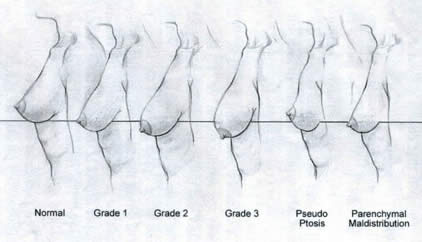The pencil test: Measuring bra needs and "breast ptosis" since the invention of the American teenager.
Among things I have done at various points in my life to determine whether I possess certain attributes of beauty: put coins between my ankles, calves, and knees (“ideal” legs meet at these three places), lain a ruler from my ribcage to my pelvic bone to see if the ruler touches my belly flesh (suggested by Glamour magazine to determine whether my stomach needs slimming), measured the distance between my eyes (it “should” be equidistant to the length of one eye), evaluated the amount of eye white showing under my irises (as inspired by the book You Are All Sanpaku), walked in wet sand and then seen how close together my right and left footsteps fell (“try walking with your feet closer together for a sexy sway!”), and traced my face shape with lipstick onto a mirror to determine whether my face was round, oval, rectanglular, or diamond-shaped.
But there’s one test that puts all the others into sharp relief. Several years ago, I found myself putting a pencil underneath my breast to determine whether I was “sagging,” a tip I’d read somewhere online (if it’s online it’s true!). As I—an adult woman with a modicum of dignity—stood there, putting a pencil underneath my breast to see if it stayed put and thus marking me as sagging I remembered I’d done this before. Except that time, I was 11, and inspired by a tidbit in a lesser teen novel, I was placing a pencil underneath my breast in the hopes that it would stay put, because that would mean I was developed enough to graduate to a real bra from the training bra I'd donned since fourth grade.
It doesn’t take a degree in women’s studies to see the problem here, right? Double bind, damned if you do, no way to win, blah blah? And yes, I get that a 13-year-old and a 33-year-old have different concerns about their breasts. It’s the idea that there’s a “test” to determine something aesthetic about our bodies that rankles me. Historically, the point of the standardized test—which is exactly what these beauty tests are—has been not so much to determine any one person’s score but rather to divide people into categories. Those who pass and those who fail; or, more subtly, those whose performance indicates certain strengths (as in aptitude for civic service) or weaknesses. And these tests haven’t been designed for the benefit of the test takers, but rather the test adjudicators, for assessing tests based on a strict template is far easier than assessing them based on individual gifts and streaks of potential.
I won’t belabor the point here but it needs to be said plainly: Beauty cannot be assessed with a standardized test. I’m not trying to make some “everybody is beautiful” argument or say that there aren’t certain characteristics (or people) that we tend to find more beautiful than others; I’m just looking at the very nature of beauty—which is about bringing pleasure and enchantment to the viewer—and seeing its inherent incompatibility with the idea of standardization. There are few questions surrounding beauty that have strict, easily ticked yes/no answers. Beauty is the essay portion of the test, not the multiple choice.
Of course, one could say the same of the concept of personality (and I’d agree), but that hasn’t stopped us from developing personality tests. Myers-Briggs, enneagrams, the Big Five, the Keirsey Temperament Sorter—we love them, we given them enormous credence in our society in everything from relationships to employment, and yet they’re designed to measure what makes us us. I love personality tests, don’t get me wrong (we ENFPs are open-minded that way), but neither was I surprised to learn that they have a long association with eugenics. (After all, physiognomy was a sort of personality test of its day, and it’s not hard to see the eugenics connection there.) Add in the connection between beauty pageants and eugenics, and suddenly these harmless little tests performed at junior high slumber parties begin to seem nefarious. I’m not trying to say that girls putting coins between their knees is equivalent to Nazis using calipers to measure Jewish people's noses, but we’re talking about dividing people based solely on whether parts of their bodies meet specific physical qualifications. It’s not reaching to find a connection here. (Let’s also forget that, by and large, the qualifications in question are those one cannot change. I’m not particularly busty but “passed” the pencil test at age 11—which of course meant that as I’ve matured, I certainly “failed” it.)
To be clear, I don’t think anyone doing these tests—or the minds that designed them—is thinking in terms of creating a more beautiful human race when releasing these tests into the world. More likely, any girl measuring the distance between her eyes or putting pencils underneath her breast is just performing her own experiment, for much the same reason we’re fascinated by the science of beauty: We want to quantify the unquantifiable. (I suspect this is one reason some sex workers join the industry, and why it’s a common fantasy as well, something writer and prostitute Charlotte Shane addresses nicely here.) It’s a losing battle, of course: Remember that even Florence Colgate, determined to have Britain’s most mathematically beautiful face, had her facial symmetry qualified with the word almost. And remember too that in the contest that crowned Colgate as almost perfect, entrants who had plastic surgery were disqualified. It’s not only perfection that counts; it’s natural perfection. In other words, beauty tests are a pass/fail system with nothing in it for the losers. What are any of us at the magic age of 30 supposed to do when we cross from passing the pencil test to failing it?
